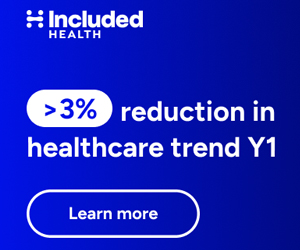By J.D. KLEINKE
 How’s this for a bitter pill?
How’s this for a bitter pill?
For Republicans looking for cures for Medicare spending growth, one of the best places to look is one of their least favorites: in the legislative pharmacopeia that is Obamacare.
There are many things opponents of President Obama’s health reform law detest, and topping the list is the Independent Payment Advisory Board, or IPAB.
Before we get to the reasons why, it is good to remember that, as sketched into the law, the singular goal of the IPAB is — guess what? — to control Medicare spending growth.
Nothing actually happens under the provision unless (i.e., until) the $525 billion per year program exceeds growth targets, and the earliest any IPAB-directed actions could take effect is 2015. But if everything really is on the table as both sides work to avoid the next in a series of fiscal embarrassments, why not a major dose of economic medicine — properly defined and administered — that is already written into law and embraced by the president?
The biggest obstacle for Republicans is political or, more precisely, optical. Although IPAB’s stated goal is to contain Medicare spending growth, the provision is the embodiment of everything Republicans do not like, not just about Obamacare, but about “Big Government” generally. IPAB is a Board! — sufficient criticism for many — of 15 “bureaucrats” who will operate beyond the reach of Congress or the public. They will make arbitrary decisions about what Medicare will or will not pay for. They will use payment to come between you and your doctor. They will take away your health care!
Maybe so. The IPAB as drafted today is a black box, not a blueprint, a plan to make plans to save money, later. And for critics, black boxes are whatever they want them to be: death panels in drag, roulette wheels for rationing care, medical-industrial phantasmagoria straight out of Kafka and Huxley. Even among health industry supporters of Obamacare — patient advocacy groups, insurers, the major provider and drug lobbies — the IPAB is worrisome because it is all cost-containment mission and few particulars. If done right, it could save not only billions of dollars but thousands of lives from needless and dangerous medical interventions; if done wrong, it could mean arbitrary intrusions into medical care and a death knell for whole spheres of medical innovation.
The need for clarity today about how the IPAB will work years from now is one more reason the White House and Congress can and should mobilize — in the service of deficit reduction — the biggest potential mechanism for Medicare cost containment already written into law. Federal budget negotiators need the vehicle; those rushing to implement Obamacare need to flesh out how the IPAB will work; and those investing — or afraid to invest — in medical innovations need to know what impact IPAB will have on the future of Medicare.
Continue reading…
 It is as natural for doctors, hospitals, health plans and others to aggressively affirm their “patient-centeredness” as it is for politicians to loudly proclaim their fealty to the hard-working American middle class. Like the politicians, the health care professionals no doubt believe every word they say.
It is as natural for doctors, hospitals, health plans and others to aggressively affirm their “patient-centeredness” as it is for politicians to loudly proclaim their fealty to the hard-working American middle class. Like the politicians, the health care professionals no doubt believe every word they say.
 Same story, different week: A governor who opposed the Affordable Care Act changes course and announces plans to opt into the Medicaid expansion.
Same story, different week: A governor who opposed the Affordable Care Act changes course and announces plans to opt into the Medicaid expansion. “Make it work.”
“Make it work.”
 These should be the best of times for the patient safety movement. After all, it was concerns over medical mistakes that launched the transformation of our delivery and payment models, from one focused on volume to one that rewards performance. The new system (currently a work-in-progress) promises to put skin in the patient safety game as never before.
These should be the best of times for the patient safety movement. After all, it was concerns over medical mistakes that launched the transformation of our delivery and payment models, from one focused on volume to one that rewards performance. The new system (currently a work-in-progress) promises to put skin in the patient safety game as never before.










